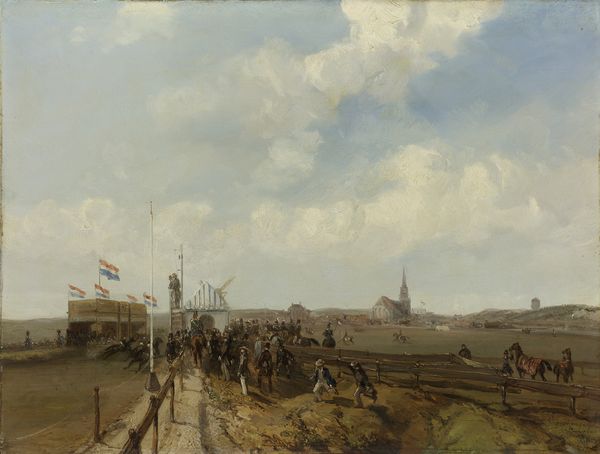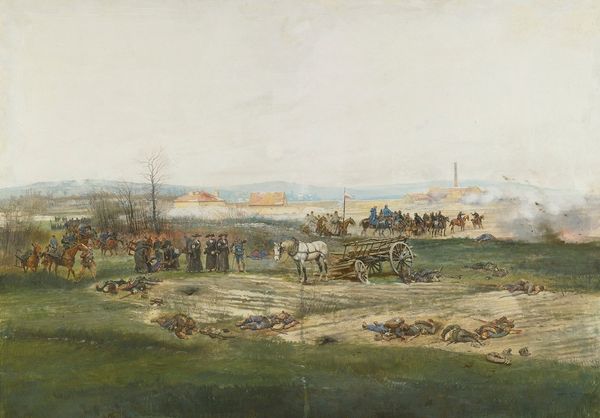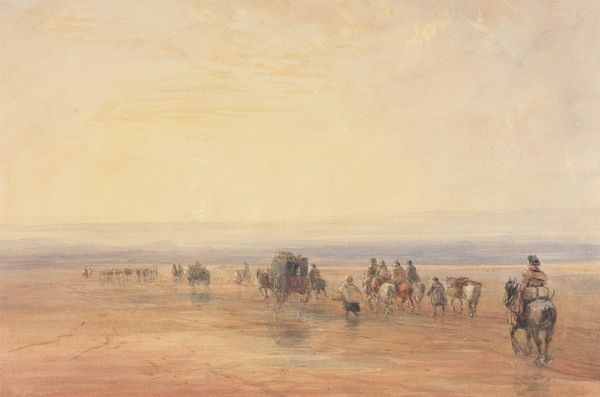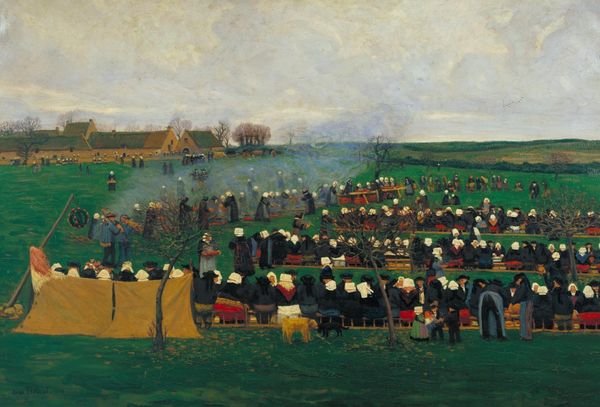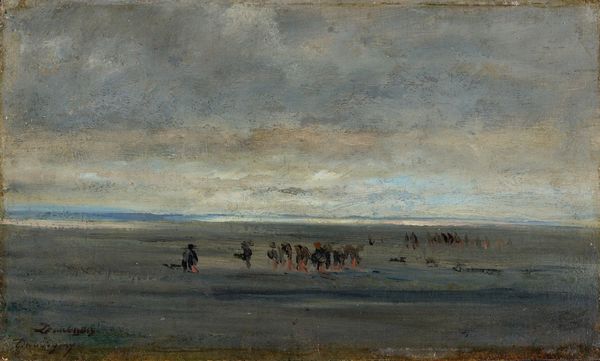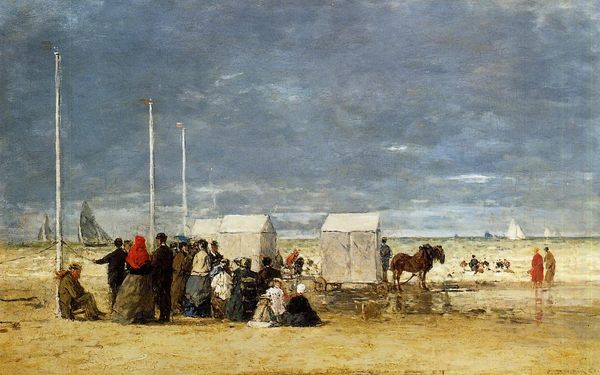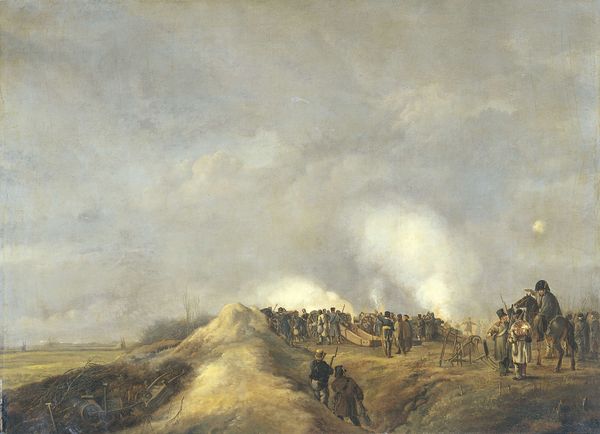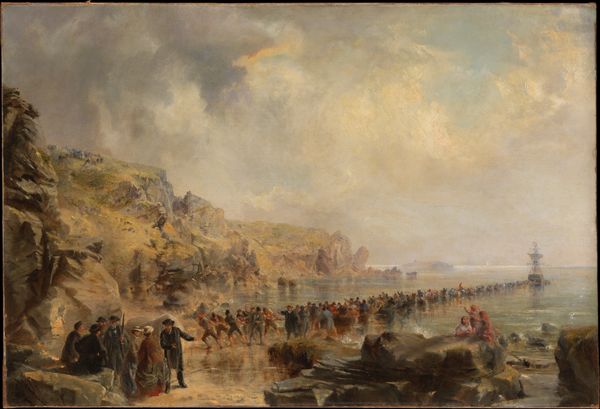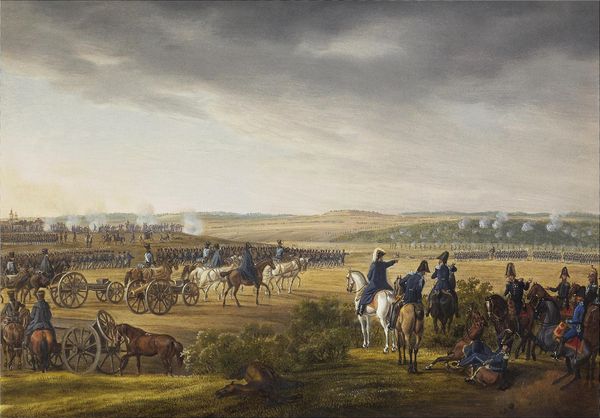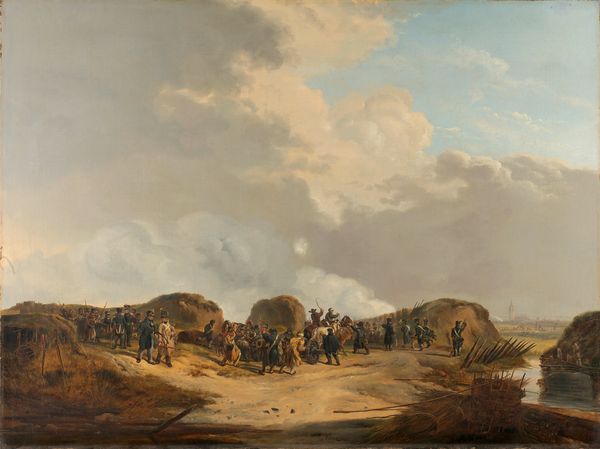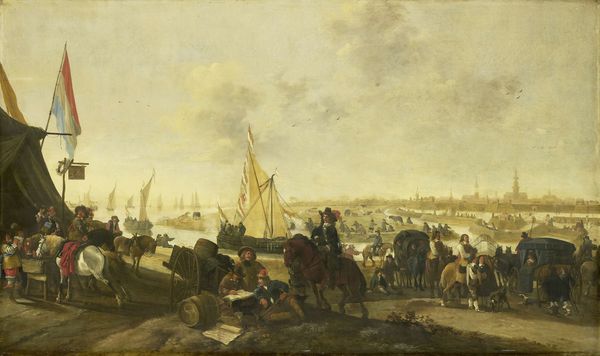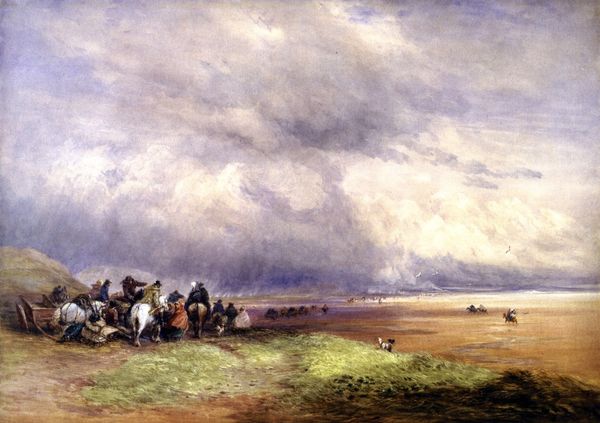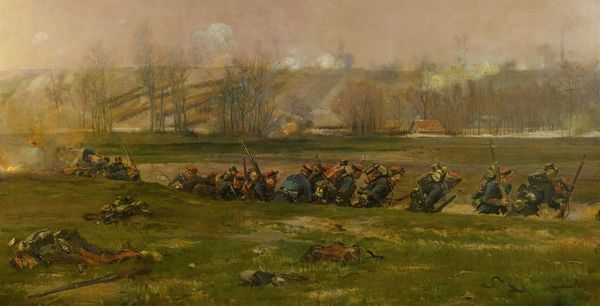
plein-air, oil-paint
#
impressionism
#
plein-air
#
oil-paint
#
landscape
#
oil painting
#
genre-painting
Dimensions: 24 cm (height) x 33.5 cm (width) (Netto)
Editor: This is Hans Smidth’s "Fur marked," painted sometime between 1860 and 1900. It’s an oil painting, and viewing it, I am struck by the flat, almost panoramic composition. What can you tell me about it? Curator: I see in this piece a direct connection to the labor and economy of 19th-century Denmark. Smidth is not simply representing a market scene; he is depicting the intersection of rural life, commerce, and the very land that sustains them. How does the artist employ the materiality of oil paint itself to evoke this relationship? Editor: The oil paint looks like it was applied in layers, suggesting the build-up of materials at a marketplace? What's the significance of plein-air technique in this work, especially given the subject matter? Curator: Painting en plein air isn’t merely about capturing a landscape; it is a direct engagement with the environment, mirroring the farmers’ and merchants’ dependence on the natural world. Notice the raw, unidealized representation of the landscape itself. This is not romanticized scenery, but a depiction of the physical reality that underpins the economic activities taking place. Think about the artist making the art work versus farmers selling their agricultural works and livestock. How does that relate? Editor: So the technique becomes part of the narrative, emphasizing the real conditions of production and exchange in this period? I hadn’t thought of it that way before. Curator: Precisely! Smidth's focus is on recording the evidence of labor and commerce that's right in front of them in Denmark at the time, instead of lofty narratives of nobility or myth. His method of using material makes the historical scene into something else. This work pushes back the boundary between artwork and craft! Editor: So, looking closely at the process and materials really opens up the work to broader historical questions. Thank you for that insightful observation! Curator: It’s a reminder that art doesn't exist in a vacuum; it is made by someone with physical actions, sold, and consumed in cultural and economic systems.
Comments
No comments
Be the first to comment and join the conversation on the ultimate creative platform.
